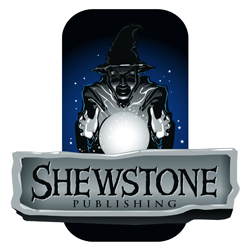We haven’t been sitting still with A Bestiary of Enchanted England (coming to Kickstarter in October 2022). We’ve been making good use of time to add a fun in-character spin to the presentation and to do in-house playtestin of the creature’s statistics. Here’s a preview of the Hobyah by Mark Lawford! (Details are still subject to change as we do further playtesting and editing.)
A gang of wicked goblins
The Hobyah
Illustration by Teresa Guido
Beware the Hobyah! A gang of wicked sharp-toothed goblins that come out at night, they are, all a-chanting “Hobyah! Hobyah! Hobyah!” as they look for your house. They be wiry little fellows with knotty joints, pointed heads and horrible faces, and they wear all ragged clothes of them they have killed before.
But if you are to protect you and your family - this here little one yours is she - then it’s a dog you need. See, they are right-scared of dogs, ‘tis well known, and like to turn tail and run at the sound of their barking. So get yourself a dog. Like this one here. He’s for sale, you know. A good dog, an all. No messing and no fussing, but he’ll see off the Hobyah before they can break into your house and carry you away, so he will.
Nasty, horrible, nighttime goblins, about four feet in height with pointed heads, pointy-chinned faces, and rows of sharp serrated teeth. Individually weak, the gang is modeled as a Mob (Magonomia, page 138) of a dozen or so.
The Fate system makes it easy to combine multiple nameless NPCs into a mob that behaves like a single, much tougher, character. This takes a lot of burden off the GM, freeing them up to be the narrator of a dramatic scene. Our playtest was a stand-up fight between three wizards and a mob of a half-dozen Hobyah. Individually, they’re weak, but when you combine their combat statistics they become quite fearsome! Our mob was a match for all three of our example characters (Deborah, Ghida, and Aonghas) — and it would be easy to challenge more wizards by adding more Hobyah to the mob! We ended up reducing their individual damage tolerance so players can wear down that big group faster, before they run out of Fate Points. The end result is that if you do fight them, they’re ferocious at the start but then buckle if the PCs are able to hit back a few times. This feels about right: the Hobyah will mob ya! But after the playtest, the don’t have staying power any more.




